
USAAF Matching Green Airfield Construction
Robert
Rice
was
one
of
the
engineers
with
the
834th
Aviation
Engineering
Battalion.
Robert,
sent
me
the
following
text
back
in
2002
by
email.
Without stories being recorded like these, so much history is lost. It was good to have been able to record Roberts part in Matchings history.
“The
834th
Engineering
Aviation
Battalion
was
my
outfit,
and
we
built
Matching
Green
Air
Drome
right
from
scratch.
It
was
a
long
time
ago,
I
am
81
years
old
now
and
I
think
about
those
years
more
and
more.
At
the
time
the
army,
which
usually
is
a
SNAFU
outfit,
got
it
sort
of
right
with
me
since
I
had
worked
beforehand
with
my
Father
on
steel
tanks
in
the
oil
fields
in
Pennsylvania
where
I
grew
up,
with
this
background
of
civil
engineering,
I
was
well placed”.
The concrete batching plant at Matching
“The 834th Engineer Aviation Battalion. was activated in May of 1942 at Westover Field in Mass USA. After training we embarked on the USS West
Point [it had been the luxury liner, America] along with 8000 other troops and we landed in Liverpool and then proceeded to Matching Green by train”.
“We
started
out
using
British
equipment
and
eating
British
rations
until
our
equipment
and
food
supplies
arrived.
We
worked
on
Matching
Green
for
around
18
months.
while
at
Matching
we
all
had
different
haunts
that
we
favored.
all
the
guys
went
to
a
different
town,
we
ran
trucks
to
so
many
place's
for
the
guys
on
a
pass.
My
place
was
Chelmsford
where
they
had
dances
at
the
Corn
Exchange
and
a
very
nice
Red
Cross
club
where
I
experienced
my
first
air
raid.
We
could
not
get
to
a
shelter
and
so
we
sat
the
the
stairway
in
the
club.
It
scared
the
living
daylights
out
of
me
and
reinforced my admiration for the British people”.
The batching plant looking towards what is now Anchor Lane, The blister Hangar was used to store bagged Cement
and is in use today as a a warehouse
“There
were
both
good
times
and
bad
during
the
period
we
built
the
drome,
we
worked
a
standard
12
hour
day
regardless
of
the
weather
conditions,
it
seemed
like
mostly
rain,
and
for
a
long
time
we
had
very
little
time
to
ourselves
since
we
also
worked
seven
days
a
week.
The
good
times
were
with
the many friends and families who invited us into their homes”.
Laying French drains alongside the perimeter track, this track is now Anchor Lane.
“We
were
told
never
to
arrive
empty
handed
and
to
go
to
the
mess
and
get
canned
goods,
etc.
to
contribute.
I
especially
remember
two
maiden
ladies
who
lived
close
to
the
manor
house
of
the
farm
we
were
building
on.
We
would
go
in
their
home
and
sit
in
the
kitchen
which
had
ships
timbers
holding
up
a
low
ceiling,
drink
tea
and
eat
scones,
all
the
time
in
our
rough
dirty
fatigues
and
the
ladies,
who
were
sisters
I
think,
just
radiated
warmth
and
made us feel so at home".
Constructing the perimeter track, Brickles Wood in the background was the location of the Bomb Storage area.
Sergeant Andrew Hertz compiled the following information to build Matching Airdrome, and thanks to him
wherever he is, for recording such vital statistics.
1,524,205 man hours were expended.
120,000 cubic yds of concrete, enough for a 2 lane highway 45 miles long.
350 buildings, both Nissen huts and brick construction were erected.
1,285,000 bricks were laid .
600,000 cubic yards of earth were evacuated.
94 acres of woods were cleared.
6 miles of 4'' and 6'' inch water mains
12 miles of French drains were placed.
A sewage system, large enough to care for a city of 2500 people was built at Abbess Roding, and is still in use to this day!
“On
Oct.24,
1943,
the
first
air
force
troops
arrived
as
the
Battalion
evacuated
its
self
built
huts
for
tents
and
very
seldom
were
billeted
under
a
solid
roof
again
until
the
war
ended.
I
only
wish
that
I
had
more
time
to
travel
to
different
sections
of
the
country.
As
it
was,
I
did
take
a
three
day
leave
in
Stratford
on
Avon
since
I
had
been
reading
a
lot
of
Shakespeare
and
loved
it.
I
did
get
sent
to
Northern
Ireland
and
to
Wales
to
anti
aircraft
gunnery
schools
and
that
was
interesting.
Of
course,
chasing
girls
was
our
first
priority
rather
than
sightseeing.
We
then
went
into
training
for
the
invasion
of
France”.
“On
June
6
our
forward
unit
which
I
was
attached
to,
tried
to
land
on
Normandy
on
Omaha
beach
but
due
to
heavy
enemy
fire
we
were
unable
to
land
and
had
to
tie
up
overnight
next
to
an
LST.
It
was
just
as
well
since
our
equipment
would
have
been
useless
at
the
time.
The
next
morning
we
went
ashore
and
since
the
original
site
for
the
air
strip
we
were
to
build
(designated
A-1)
was
still
in
German
hands,
we
reconned
and
found
another
area
right
above
the
cliffs
and
by
June
8th
we
had
planes
landing
and
taking
off
.
These
were
the
first
allied
planes
to
operate
in
France
since
its
fall.
For
our efforts we were awarded the Presidential Unit Citation”.
“We went on to serve in more campaigns. By the end of the war we had some elements of the Battalion in Pilson.
There
were
separate
Engineering
Battalions
for
each
of
the
airfields
built
in
England
by
the
Americans,
RAF
airfields
were
built
by
British
Contractors
such
as
Laing
etc.
I
was
surprised
that
the
840th
was
credited
for
helping
build
Matching
as
we
had
just
about
finished
when
we
went
into
training
for
the invasion. We did come back to Matching for a month or so to finish off some work but we never saw them”.
“I have never been back to Matching, I have really wanted to but it just wasn't in the cards”.
Half track in Normandy. Laying mesh tracking above Omaha beach for the first allied airfield
(A1) after the invasion. For this, the unit won its Presidential Citation
for Bravery.
Images© Robert Rice, Rochester, New York, USA.
The photos that appear between the paragraphs are courtesy of footnote.com and were all taken during the construction of Matching airfield.
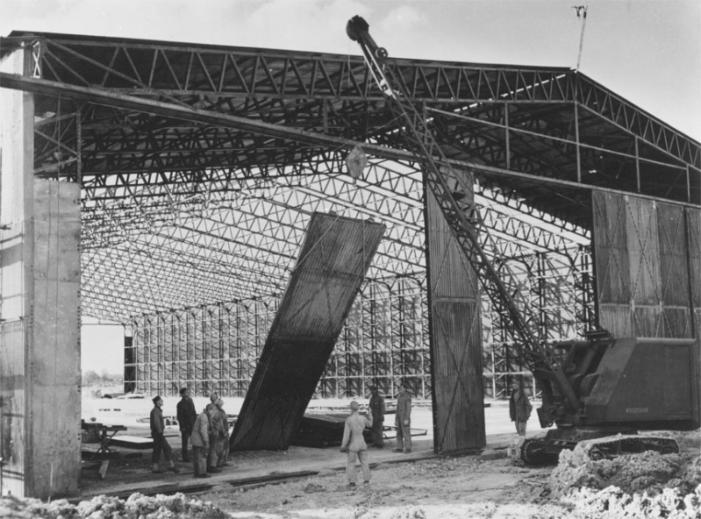
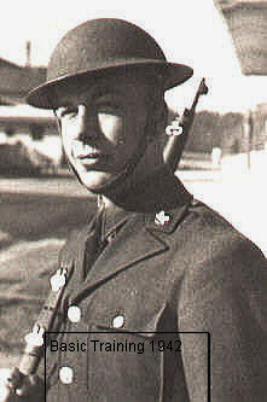

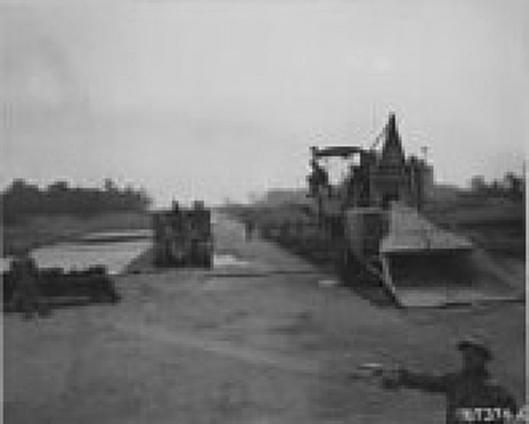



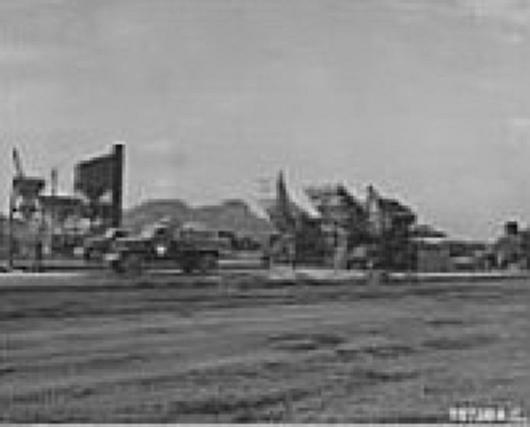





Wartime Airfields
rjkdesign
Wartime Airfields
rjkdesign


Wartime Airfields
Wartime Airfields

USAAF Matching Green Airfield Construction

Robert
Rice
was
one
of
the
engineers
with
the
834th
Aviation
Engineering
Battalion.
Robert
sent
me
the
following
text
back
in
2002
by
email.
Without
stories
being
recorded
like
these
so
much
history
is
lost.
It
was
good
to
have
been
able
to
record
Roberts
part
in
Matchings
history.
“The
834th
Engineering
Aviation
Battalion
was
my
outfit,
and
we
built
Matching
Green
Air
Drome
right
from
scratch.
It
was
a
long
time
ago,
I
am
81
years
old
now
and
I
think
about
those
years
more
and
more.
At
the
time
the
army,
which
usually
is
a
SNAFU
outfit,
got
it
sort
of
right
with
me
since
I
had
worked
beforehand
with
my
Father
on
steel
tanks
in
the
oil
fields
in
Pennsylvania
where
I
grew
up,
with
this
background
of
civil engineering, I was well placed”.
The concrete batching plant at Matching
“The
834th
Engineer
Aviation
Battalion.
was
activated
in
May
of
1942
at
Westover
Field
in
Mass
USA.
After
training
we
embarked
on
the
USS
West
Point
[it
had
been
the
luxury
liner,
America]
along
with
8000
other
troops
and
we
landed
in
Liverpool
and
then
proceeded
to
Matching
Green by train”.
“We
started
out
using
British
equipment
and
eating
British
rations
until
our
equipment
and
food
supplies
arrived.
We
worked
on
Matching
Green
for
around
18
months.
while
at
Matching
we
all
had
different
haunts
that
we
favored.
all
the
guys
went
to
a
different
town,
we
ran
trucks
to
so
many
place's
for
the
guys
on
a
pass.
My
place
was
Chelmsford
where
they
had
dances
at
the
Corn
Exchange
and
a
very
nice
Red
Cross
club
where
I
experienced
my
first
air
raid.
We
could
not
get
to
a
shelter
and
so
we
sat
the
the
stairway
in
the
club.
It
scared
the
living
daylights
out
of
me
and
reinforced
my
admiration
for
the
British
people”.
The batching plant looking towards what is now Anchor Lane, The
blister Hangar was used to store bagged Cement
and is in use today as a a warehouse
“There
were
both
good
times
and
bad
during
the
period
we
built
the
drome,
we
worked
a
standard
12
hour
day
regardless
of
the
weather
conditions,
it
seemed
like
mostly
rain,
and
for
a
long
time
we
had
very
little
time
to
ourselves
since
we
also
worked
seven
days
a
week.
The
good
times
were
with
the
many
friends
and
families
who
invited
us
into
their homes”.
Laying French drains alongside the perimeter track, this track is now
Anchor Lane.
“We
were
told
never
to
arrive
empty
handed
and
to
go
to
the
mess
and
get
canned
goods,
etc.
to
contribute.
I
especially
remember
two
maiden
ladies
who
lived
close
to
the
manor
house
of
the
farm
we
were
building
on.
We
would
go
in
their
home
and
sit
in
the
kitchen
which
had
ships
timbers
holding
up
a
low
ceiling,
drink
tea
and
eat
scones,
all
the
time
in
our
rough
dirty
fatigues
and
the
ladies,
who
were
sisters
I
think,
just
radiated warmth and made us feel so at home".
Constructing the perimeter track, Brickles Wood in the background was
the location of the Bomb Storage area.
Sergeant Andrew Hertz compiled the following information to build
Matching Airdrome, and thanks to him wherever he is, for recording
such vital statistics.
1,524,205 man hours were expended.
120,000 cubic yds of concrete, enough for a 2 lane
highway 45 miles long.
350 buildings, both Nissen huts and brick construction
were erected.
1,285,000 bricks were laid.
600,000 cubic yards of earth were evacuated.
94 acres of woods were cleared.
6 miles of 4'' and 6'' inch water mains
12 miles of French drains were placed.
A sewage system, large enough to care for a city of 2500 people was
built at Abbess Roding, and is still in use to this day!
“On
Oct.24,
1943,
the
first
air
force
troops
arrived
as
the
Battalion
evacuated
its
self
built
huts
for
tents
and
very
seldom
were
billeted
under
a
solid
roof
again
until
the
war
ended.
I
only
wish
that
I
had
more
time
to
travel
to
different
sections
of
the
country.
As
it
was,
I
did
take
a
three
day
leave
in
Stratford
on
Avon
since
I
had
been
reading
a
lot
of
Shakespeare
and
loved
it.
I
did
get
sent
to
Northern
Ireland
and
to
Wales
to
anti
aircraft
gunnery
schools
and
that
was
interesting.
Of
course,
chasing
girls
was
our
first
priority
rather
than
sightseeing.
We
then went into training for the invasion of France”.
“On
June
6
our
forward
unit
which
I
was
attached
to,
tried
to
land
on
Normandy
on
Omaha
beach
but
due
to
heavy
enemy
fire
we
were
unable
to
land
and
had
to
tie
up
overnight
next
to
an
LST.
It
was
just
as
well
since
our
equipment
would
have
been
useless
at
the
time.
The
next
morning
we
went
ashore
and
since
the
original
site
for
the
air
strip
we
were
to
build
(designated
A-1)
was
still
in
German
hands,
we
reconned
and
found
another
area
right
above
the
cliffs
and
by
June
8th
we
had
planes
landing
and
taking
off
.
These
were
the
first
allied
planes
to
operate
in
France
since
its
fall.
For
our
efforts
we
were
awarded
the
Presidential Unit Citation”.
“We
went
on
to
serve
in
more
campaigns.
By
the
end
of
the
war
we
had
some elements of the Battalion in Pilson.
There
were
separate
Engineering
Battalions
for
each
of
the
airfields
built
in
England
by
the
Americans,
RAF
airfields
were
built
by
British
Contractors
such
as
Laing
etc.
I
was
surprised
that
the
840th
was
credited
for
helping
build
Matching
as
we
had
just
about
finished
when
we
went
into
training
for
the
invasion.
We
did
come
back
to
Matching
for
a month or so to finish off some work but we never saw them”.
“I have never been back to Matching, I have really wanted to but it just
wasn't in the cards”.
Left - Half track in Normandy. Right - Laying mesh tracking above
Omaha beach for the first allied airfield (A1) after the invasion. For this,
the unit won its Presidential Citation for Bravery.
Images© Robert Rice, Rochester, New York, USA.
The photos that appear between the paragraphs are courtesy of
footnote.com and were all taken during the construction of Matching
airfield.
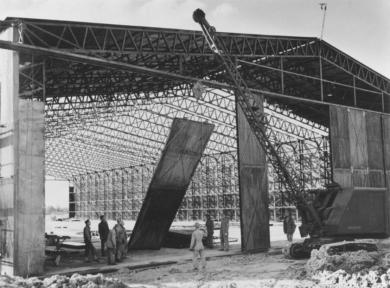



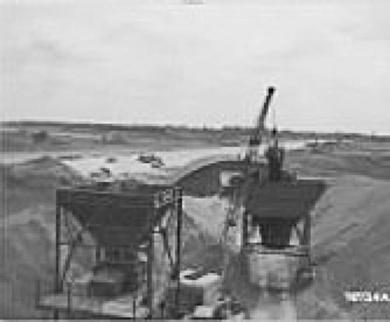
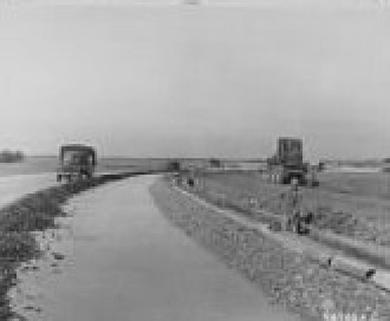

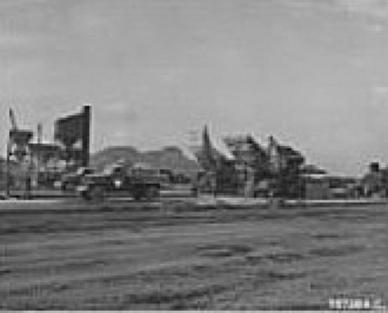
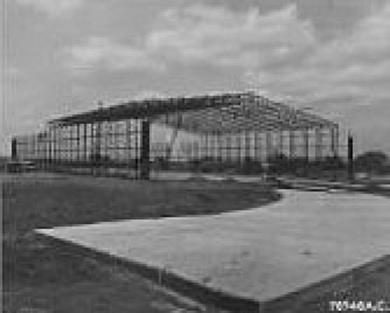

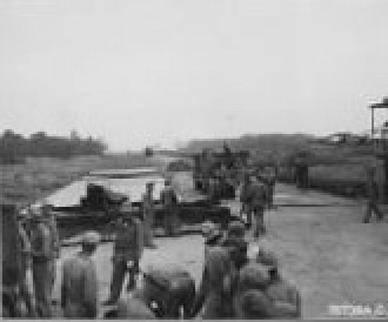



rjkdesign













